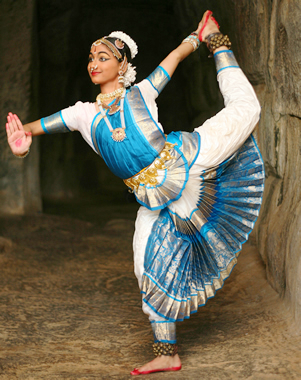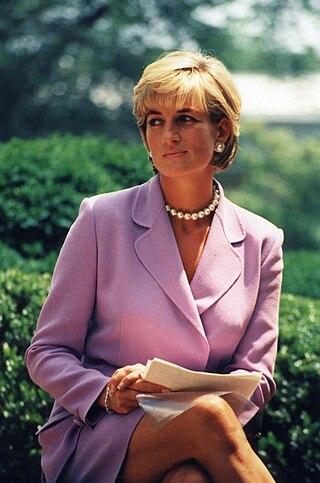
A wedding dress or bridal gown is the dress worn by the bride during a wedding ceremony. The color, style and ceremonial importance of the gown can depend on the religion and culture of the wedding participants. In Western cultures and Anglo-Saxon cultural spheres, the wedding dress is most commonly white, a fashion made popular by Queen Victoria when she married in 1840. In Eastern cultures, brides often choose red to symbolize auspiciousness.

A Mangalsutra, or Tali, is a necklace that the groom ties around the bride's neck in the Indian subcontinent, in a ceremony called Mangalya Dharanam within a Hindu wedding. The necklace serves as a visual marker of status as a married Hindu woman.
Khada dupatta is the traditional wedding dress of Hyderabadi Muslim brides in the Indian subcontinent. It is an elaborate wedding ensemble comprising a kurta (tunic), chooridaar, and a 6-yard dupatta.

Punjabi wedding traditions are a strong reflection of Punjabi culture with ritual, song, dance, food, and dress that have evolved over centuries.
A Brunei Malay wedding has many types of ceremonies.
Chinese pre-wedding customs are traditional Chinese rituals prescribed by the 禮記 (láih gei, the 儀禮 (yìh láih and the 白虎通 condensed into a series of rituals now known as the 三書六禮. Traditionally speaking, a wedding that incorporates all six rites is considered a daaih chéui.

The Preslav Treasure was found in autumn of 1978 at the vineyard in Castana, 3 km to the north - west of the second Bulgarian capital – Veliki Preslav. The excavations that followed revealed more than 170 golden, silver and bronze objects including 15 silver Byzantine coins belonging to Constantine VII, Romanos II and other artifacts dating far back to the period between 3rd and 7th centuries.

Queen Elizabeth II owned a historic collection of jewels – some as monarch and others as a private individual. They are separate from the gems and jewels of the Royal Collection, and from the coronation and state regalia that make up the Crown Jewels.
A Poruwa ceremony is a traditional Sinhalese wedding ceremony. The ceremony takes place on a "Poruwa", a beautifully decorated, traditional wooden platform. The ceremony involves a series of rituals performed by the bride and groom, and their families.
Attire of Mangalorean Catholics refers to the traditional clothing of the Mangalorean Catholics from the Mangalore Diocese on the southwestern coast of India.
Kandyan jewellery comes from the hill capital of Ceylon or Sri Lanka. The Kandyan Kingdom lasted till 1815 resulting in the original sets of jewellery and designs still being preserved and worn by Kandyan families today.

The wedding of Princess Elizabeth and Philip Mountbatten took place on Thursday 20 November 1947 at Westminster Abbey in London, United Kingdom. The bride was the elder daughter of King George VI and Queen Elizabeth as well as the heir presumptive to the British throne. The groom was born a Greek and Danish prince; he stopped using these foreign titles on his adoption of British nationality four months before the announcement of their marriage and was made Duke of Edinburgh, Earl of Merioneth and Baron Greenwich on the morning of the wedding.

The wedding dress of Princess Helen of Waldeck and Pyrmont was worn by the bride at her wedding to Prince Leopold, Duke of Albany, on 27 April 1882 in St. George's Chapel, Windsor Castle. Prince Leopold was the youngest son of Queen Victoria and Prince Albert. Princess Helen was the daughter of George Victor, Prince of Waldeck and Pyrmont and his wife Princess Helena of Nassau.
The wedding dress of Sophie Rhys-Jones is the bridal gown worn by her at her wedding to Prince Edward, Earl of Wessex on 19 June 1999 at St George's Chapel, Windsor Castle. The dress was designed by Samantha Shaw.

Tamil people have historically been connoisseurs of fine golden jewellery, which has a history predating the Sangam period in the Indian subcontinent. Ancient Tamil literature lists out the different types of jewellery worn by women historically from head to toe. Apart from gold, jewellery was also fashioned out of silver, copper and brass.
Mohra Bakhtan is a village located in Tehsil Kallar Syedan. Formally, it was a part of Tehsil Kahuta and was later added to Tehsil Kallar Syedan after its creation. The District for Mohra Bakhtan is Rawalpindi, Pakistan, and Union Council is Ghazan Abad. It is considered one of the biggest villages in the tehsil by the ratio of both land and population. The current councilor for the village is Dhok Mirzayan. Construction by corporations on the lower end of Mohra Bakhtan has affected its environment.
Weddings in Myanmar, considered auspicious occasions in Burmese culture, reflect various ethnic, religious, and regional traditions. Depending on an individual's family social economic status, personal preferences and titles held, Burmese weddings can be religious or secular, and extravagant or simple. Wedding expenses are covered by the groom's family. Myanmar is a predominantly Buddhist country, and many wedding customs and traditions are influenced by Buddhism.

Diana, Princess of Wales, owned a collection of jewels both as a member of the British royal family and as a private individual. These were separate from the coronation and state regalia of the crown jewels. Most of her jewels were either presents from foreign royalty, on loan from Queen Elizabeth II, wedding presents, purchased by Diana herself, or heirlooms belonging to the Spencer family.

The chedda of Tlemcen is a traditional Algerian dress, more precisely of the city of Tlemcen, but also worn in the west of the country, in particular in Oran and Mostaganem. A product of the local craftsmanship, it is worn by brides in Tlemcen for their wedding ceremony.

The bodo blouse, locally known as baju bodo, is a sheer and transparent short-sleeved loose blouse, a traditional attire for women of the Bugis and Makassar peoples of South Sulawesi, Indonesia. A bodo blouse is traditionally combined with a matching woven sarong that covered the waist below the body.










